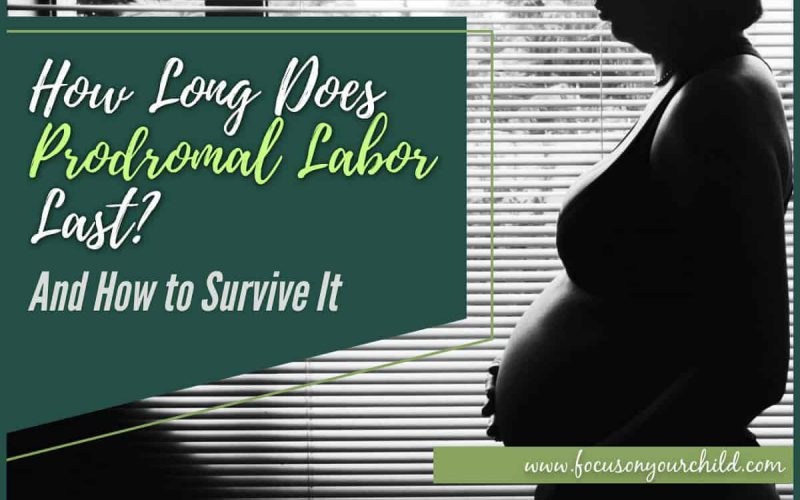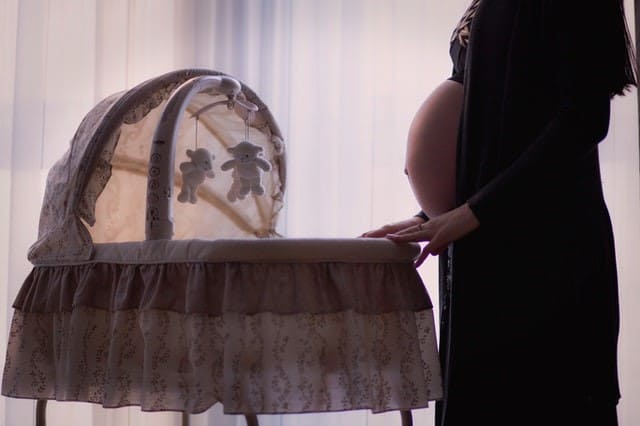During the third trimester of your pregnancy, you may experience contractions, the tightening and releasing of muscles in the uterus, from time to time. These uterine contractions help prepare your body for delivery, and one of the signals that you’re about to go into labor is when the contractions become more consistent. However, not all contractions cause changes to the cervix the same way once true labor contractions kick in. Such is the reality of prodromal labor, which can be confusing for expectant moms – particularly first-time moms.
Prodromal labor is quite common and is not harmful to you or your baby. It can start days, weeks, or even a month before your expected delivery, often starting and stopping at the same time each day (or night). The experience can be physically and emotionally taxing. Keeping track of your contractions’ frequency and intensity can help you determine if your baby is on the way or if it is a false alarm.
Prodromal labor is often called ‘false labor.’ Doctors, however, avoid using this term because they consider it inaccurate or misleading. Prodromal labor contractions, even if they come and go, are real, but there is no need to run to the hospital yet. By understanding what is happening and how to respond, you will be able to keep your calm as you go through prodromal labor, and be better prepared to distinguish when active labor hits you.
Prodromal Labor: What’s Going On?
Prodromal labor can give moms-to-be false hope. Derived from the Greek word ‘prodromos,’ which means forerunner, prodromal, in clinical medicine, refers to the early set of signs and symptoms preceding the onset of a disease or an illness.
Prodromal labor, in turn, happens before the onset of full, active labor. Described as ‘warm-up contractions,’ when pain can be intense and happen in prolonged intervals, prodromal labor can feel like true labor has begun. While it shares some of the hallmarks of active labor, prodromal labor contractions tend to start and stop. Although these contractions can soften or dilate your cervix a bit, they are not significant enough to lead to imminent birth.
This means that despite the uncomfortable and intense contractions, they will not result in your child’s birth, yet – exactly why prodromal labor is such a frustrating experience for many pregnant women.
Benefits of Prodromal Labor
The exact cause of prodromal labor is not clear. And, while it may seem as if the whole ‘practice contractions’ are pointless, which is what throws women off, many experts agree that ultimately, it helps both the mother and the baby prepare for what is soon to come – active labor.
It is suggested that prodromal labor can do the following:
-
Help your body prepare for active labor
While prodromal labor can seem unnecessary and exhausting, it is believed to be the body’s natural way of slowly preparing for labor. Prodromal contractions are thought to help get your body prepared for birth. Many women who have experienced prodromal labor report shorter active labor.
-
Get your baby in an optimal position for delivery
Some experts believe that prodromal labor is more likely to happen when your baby is in a less ideal position. It is said that prodromal labor may help move the baby into a suitable position for delivery.
-
Help you learn how to handle full-on labor
While there is no guarantee that prodromal labor contractions will shorten active labor, they sort of serve as your body’s signal that labor is almost here and help you prepare for it. At this point, you can learn and practice the best relaxation and breathing techniques to help you cope with true labor the moment it kicks in.
How to Tell if It Is Prodromal Labor
Like most pregnant women, you are probably wondering how you can know for sure that you are experiencing the real deal and not just a false alarm. If you are experiencing the conditions below, you may be experiencing prodromal labor rather than active labor:
- You are in your third trimester of pregnancy, usually towards the end of it
- Contractions that are intense and painful, and do not stop despite movements, rest, or a warm bath or shower
- Contractions that usually start and stop at the same time each day
- Contractions that fluctuate in strength but are not getting closer together
- Lack of significant cervical dilation and other signs of impending labor, including losing your mucus plug, water breaking, and vaginal spotting, aka the ‘bloody show,’ which indicates that delivery is right around the corner
Braxton-Hicks vs. Prodromal Labor
Braxton-Hicks are commonly experienced by expectant moms during the latter half of their pregnancy. Less painful and consistent, Braxton-Hicks contractions come with irregular patterns. They can be tight and uncomfortable, but they rarely last for long periods nor grow in intensity. Braxton-Hicks contractions can usually be alleviated with relaxation, changing position, or by drinking water and emptying your bladder.
Prodromal contractions, on the other hand, are stronger and tend to come in a regular pattern but with varying intensity. The contractions can be strong but only at a certain point and do not really progress or get stronger.
Unlike Braxton-Hicks that do not cause cervical dilation, prodromal labor contractions can gradually dilate or efface the cervix. Although, unfortunately, they do not necessarily mean that your baby will soon be on the way.
Prodromal Labor or Real Labor?
So how do you know if you are already in an actual labor phase and not just experiencing prodromal labor? While prodromal labor shares similar signs and may seem like the real deal, some indicators can tell you that you are in true labor.
Unlike warm-up contractions, real labor contractions tend to happen at regular intervals and get closer together as time goes on. Contractions also pick up in intensity to as much as you cannot talk through them anymore.
Whereas false labor contractions tend to be felt mostly in front of the abdomen or the pelvic region, true labor contractions are often felt starting in the lower back and moving to the front of the abdomen. Furthermore, real labor contractions may also come with increased vaginal discharge or spotting – an indication that your cervix is dilating and that it is time to call your birth team or your doctor.
How Long Does Prodromal Labor Last?
Prodromal labor tends to happen randomly, and not all mothers-to-be may experience it. It may also be experienced during the first pregnancy, but not on subsequent births.
Many women report contractions that feel real – intense and painful. The contractions can begin up to a week or even a month before your due date. They are fairly regular, usually around five to ten minutes apart from one another, with each contraction lasting for about a minute.
While the timeline is different with each pregnancy, prodromal labor can be on and off, typically lasting from 24 to 72 hours. In some cases, this phase can stick around for a couple of weeks. Take comfort in the knowledge that this too shall pass.
7 Ways to Get Through Prodromal Labor
Prodromal labor can be painful and disruptive. The bigger challenge during this phase, however, would be fatigue rather than pain. It is important to make sure you spend your time and energy resting and keeping yourself well-hydrated and well-fed.
Since there is the potential for the real deal to occur not too much later, it is suggested that you conserve your energy for the actual labor and delivery. Here are things you can do to keep your mind off of the contractions:
-
Stay well-hydrated and nourished
Make sure you are getting enough fluids. Eat nutritious food to ensure you and your baby are getting the right nutrients.
-
Take a warm bath
A warm bath can aid in providing you some much-needed relaxation. You might also find it more beneficial to soak in water with Epsom salt.
-
Take naps and rest when you can
Practice labor contractions can be uncomfortable and tire you out. It can become tricky to get a good night’s sleep once they kick in. So, position your pregnancy pillow and nap when you can. This C-shaped PharMeDoc Pregnancy Pillow offers excellent back, hips, knees, neck, and head support, and can help ease you into a more relaxed sleep position. Now more than ever, your body deserves as much rest as it prepares for your newborn’s arrival.
-
Try some exercises to improve your baby’s position
Light stretching and exercises can leave you with a sense of relief and help your baby move to a better position. It can also help to speed up and encourage active labor.
-
Take a short, leisurely walk
Unless you have medical reasons not to, light walking can ease the discomfort caused by the contractions, and the scenery can help calm your nerves.
-
Find a distraction
Try to distract your mind and body from what you are experiencing. Do things that can calm you, like reading a book, watching a movie, listening to music, or meditating.
-
Use it as an opportunity to practice for real labor
You might as well take this phase as an opportunity to practice and find out which breathing technique or relaxation method works best for you. This way, you can better prepare yourself once those painful and active labor contractions begin.
Takeaway
Prodromal labor can be downright confusing and cause a bit of unnecessary anxiety and panic, especially if the experience drags on for days. Identifying the difference between false labor and full-on active labor, as well as knowing how to cope with prodromal contractions, can help you make sound decisions about your labor and delivery.
So, hang in there. These frustrating symptoms mean that you are in the home stretch of your pregnancy, and you will get to meet your bundle of joy soon!










